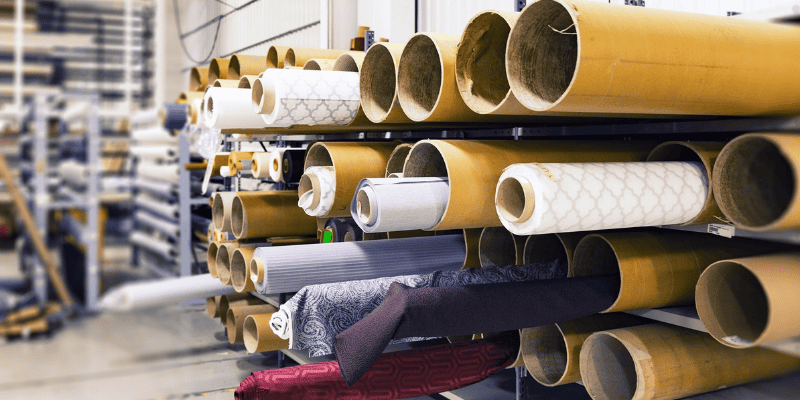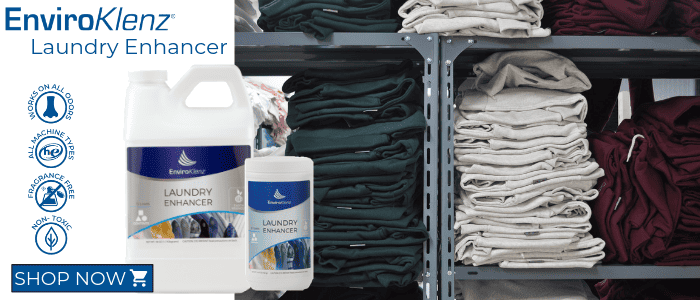The moment that your body touches the fabric of the new clothing that you just purchased yesterday it sparks a reaction on the surface of your skin that can produce a red rash and a horrible bout of itching. Why is your body having this severe of a reaction to the material of your new outfit? If you are someone that commonly experiences this type of reaction to new clothing that you place on your body this could be a huge indicator of a potential allergy at play, but to what?
Chemicals are present in almost every item that we come into contact with, such as flooring, paint, cleaning products, furniture, and even new clothing that you purchase. This may come as a surprise, but the brutal reality is that clothing is one of the most chemical filled items that we come into contact with daily. From dyes, to phthalates, to flame retardants, and even formaldehyde, the list of chemicals found in manufactured clothing could be in the 1,000’s. This large list of chemicals that are found in clothing fabric helped carve the path for the name that many associate with manufactured clothing, which is ‘toxic clothing’.
Toxic clothing is produced with synthetic fabrics that have been heavily processed with an amalgam of different potentially toxic chemicals to construct the article of clothing. These chemicals can elicit an allergic reaction on the skin that can impact the health of an individual who is either sensitive to the fabric or that finds themselves allergic to the chemical present on the material like formaldehyde.
In this article we are going to dive deeper into the world of toxic clothing and how the chemicals found in the material like formaldehyde can produce a formaldehyde allergy in the body.
What is Formaldehyde Found in
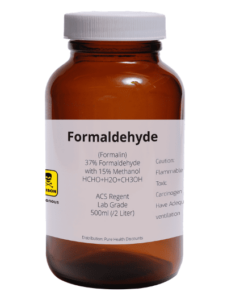 The chemical formaldehyde is a highly dangerous substance that is used to kill household products that kill germs and/or preserve materials. When it comes to formaldehyde in clothing, the chemicals core capability includes the reduction of wrinkles on the material to maintain its appearance. This chemical is a highly flammable substance that is bound to fill your home with toxic vapors that can be dangerous to human health. The longer that exposure occurs to formaldehyde in the air of your environment the more at risk you are at obtaining significant health issues.
The chemical formaldehyde is a highly dangerous substance that is used to kill household products that kill germs and/or preserve materials. When it comes to formaldehyde in clothing, the chemicals core capability includes the reduction of wrinkles on the material to maintain its appearance. This chemical is a highly flammable substance that is bound to fill your home with toxic vapors that can be dangerous to human health. The longer that exposure occurs to formaldehyde in the air of your environment the more at risk you are at obtaining significant health issues.
Did you know that the largest source of formaldehyde is the chemical manufacturing industry? This chemical can be found in cigarette smoke, burning fuels, plywood, particle board, pressed woods, and textiles used for furniture and clothing. The reason for formaldehyde’s increased use in many household products and building materials is due to its low cost to purchase and use in products. Therefore, it can be hard to strip your home completely of this potentially toxic chemical.
Does Formaldehyde Smell?
The smell and presence of formaldehyde in your personal items, whether in your clothes and household items can produce a notable odor that is associated with the chemical formaldehyde. The ‘new’ odor that we commonly experience from newly purchased furniture, flooring, or even a car that you buy, the smell will be overwhelming and completely take over the space with its chemical odor. Although we just automatically associate this odor with the smell of new, the reality is that this odor is comprised of chemicals, particularly formaldehyde that will flood the air space and spread its chemical odor throughout the environment.
The smell produced from formaldehyde can trigger an array of issues within an individual that is sensitive or allergic to chemicals such as formaldehyde. Some people may even suffer from a formaldehyde allergy that will flare when exposure to formaldehyde occurs on the skin, through ingestion, or through inhalation.
Toxic Chemicals in Clothing
Natural fabrics are slowly being replaced for synthetic materials that are taking over the textile industry. With over 8,000 synthetic chemicals used in the textile manufacturing industry, the potential list of chemicals and carcinogens found in one piece of clothing could be simply unfathomable to the normal everyday individual. Among the chemicals typically found in the textile industry, these are the top chemicals found in manufactured clothing.
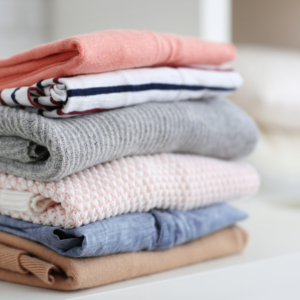
- Glyphosate is a chemical that is used for herbicide in cotton growing and is found in cotton textiles. This chemical is known as a carcinogenic that can potentially lead to health issues and has been associated with autism.
- VOCs are used as a solvent in all aspects of the textile manufacturing process. These toxic chemicals are found in finished textiles, particularly those clothing with prints that were printed on to the material. VOCs will off gas into the air and cause developmental/reproductive system damage, skin irritation, and liver problems.
- PFCS is used to create a durable water resistance on the material of the clothing to act as a stain repellant. This chemical is present in finished textiles and will produce carcinogens into the air that can enter into bloodstream and impact human health.
- Flame Retardants are used in clothing to stop clothes from burning and this chemical is required on children’s clothing. This chemical, however, can lead to endocrine disruption, production of neurotoxins, and carcinogens.
- Phthalates are used in the printing of textile industry that comes from the ink of the printing process. This toxic chemical will create endocrine disruptors in the air that will impact the health of those exposed.
- Formaldehyde is used mainly as a wrinkle-free solution on clothing that will protect it from wrinkles, shrinking, and the running of dyes and prints on the clothes. This chemical is known to be very volatile in the presence of humans and can lead to an array of health issues including allergies and respiratory issues.
Allergy to Formaldehyde in Clothing
Toxic clothing that contains a mix of chemicals will have an accumulation of allergenic compounds like formaldehyde that is used on the fabric for a variety of reasons to help preserve the fabric. When clothing is packed full of chemicals it typically will take at least one wash to begin the process of removing and shedding these chemicals from the fabric of the material. After you wash the new fabrics in the washing machine it will reduce the levels of formaldehyde dramatically. If a person comes into contact with this chemical prior to washing the fabric, or even from residue that appears on the clothing after a wash cycle, it can spark an allergic reaction that will be evident on the skin with a red rash and itchy skin.
Formaldehyde Allergy Exposure Symptoms
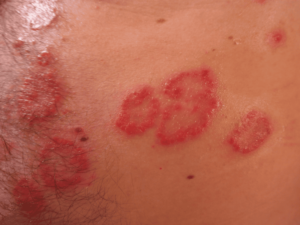 An allergy to formaldehyde can occur through skin contact with products or clothes that are made using the chemical formaldehyde. This allergy on the skin that is caused by clothing is called dermatitis, and it will appear as a red rash on the skin. Along with irritation and redness on the skin, formaldehyde can also impact the health of those exposed in the form of symptoms such as the following:
An allergy to formaldehyde can occur through skin contact with products or clothes that are made using the chemical formaldehyde. This allergy on the skin that is caused by clothing is called dermatitis, and it will appear as a red rash on the skin. Along with irritation and redness on the skin, formaldehyde can also impact the health of those exposed in the form of symptoms such as the following:
- Skin irritation
- Nausea
- Watery eyes
- Burning of the nose, eyes, and throat
- Coughing
How to Get Formaldehyde Chemical Smell Out of Clothes
After purchasing a new pair of clothing or any items that are packed full of chemicals like formaldehyde it will be necessary to properly wash and deodorize the clothes of this toxic, allergy provoking chemical(s) from the material. As we discussed earlier, by washing an article of clothing that is submerged in chemicals it will help to drastically reduce the levels of the formaldehyde from the material. However, most detergents are not equipped to strip away all traces of chemicals from the material, and in some cases, it can actually make the situation worse. Therefore, along with using a detergent it will be necessary to use the addition of a laundry enhancer that is designed to break down and neutralize the chemicals from the fabric of the clothing.
The EnviroKlenz Laundry Enhancer is a safe and effective laundry enhancer that removes stubborn laundry odors such as musty & mildew smells, fragrances from detergents & fabric softeners, perfumes smell and scents, thrift store odors left on clothing by the previous owner. EnviroKlenz Laundry Enhancer works along with your normal detergent to enhance its ability to remove those tough odors that would normally be impossible to remove and best of all EnviroKlenz laundry Enhancer contains no masking agents or fragrances providing you with clean and odor results. When it comes to formaldehyde the EnviroKlenz Laundry Enhancer will effectively break it down and remove it from the fabric within one wash!
EnviroKlenz® Medical Disclaimer:
“Any information that is provided on this website is not for the use by any commercial or personal entity without expressed written consent of the blog author. The material and statements illustrated within this blog are not intended to diagnose, treat, cure, or prevent any diseases or medical conditions. Nor does the author in any way guarantee or validate the validity, totality, or efficacy of any claims and will therefore not be held responsible for the content of any claims. Always consult your medical physician for any specific medical advice or recommendations.”








